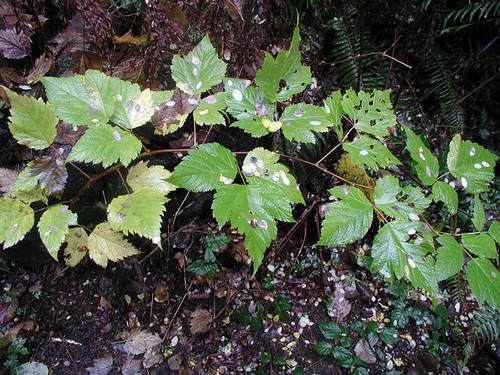There exists a day, sometimes a few days, but no more than two, when the plants seem to just give up a little. The vibrant work of creating green slows just a little and the upright growth relaxes ever so slightly. Then, a bit later; a few days, a few weeks or even a month, the plants just let go - give up so to speak, and accept the oncoming notes of autumn.
That first day of relaxation came here last week. There was a certain loss of energy in the air - a slight but new transparency to previously vigorous and opaque green leaves. That day always comes with a certain mournfulness since it presages the beginning of the dormancy of winter. It happens to all the plants in turn: the hostas and ligularia, once so proud and upright, relaxed most today - their leaf tips nearly touching the ground now, the solid mounds of foliage now growing attenuated and mournful. The hydrangea blossoms - once so large and upright, dinner plate sized and dark blue, now bend under the greying lilac weight of their fading blossoms. Even the weeds - blackberry among them seem to give up the struggle a bit.

I had hoped that that second day would delay a bit - to give us a a few more weeks of the joy of summer and the seemingly boundless energy of sun and moon and heat to help grow and bloom. Yet today, despite the lovely produce much in evidence at the farmer's market, came that second signal day, a mere week after the first. Today was a gray day, one that felt more like early fall - more like late September or even October. A few yellow leaves dropped from the taller trees, a few others appeared on more trees, and the relaxation in the gardens grew still more obvious. More than a few flowers needed deadheading and a bit of pruning to keep up appearances. Still others are putting in that last manic blast of energy to produce a lesser fall flowering in the hopes of producing another crop of seeds to see them through the winter.
The grasses - tall miscanthuses of all types, the needle grasses, and the all the various carex forms also seem to have relaxed a bit. The miscanthus are all letting the odd stalk fall over and most are starting to show seed heads. Soon it will be time to tie them up like corn shucks to give height and texture to the winter landscape. The needle grasses too are going to flower, their infinitely thin and pale yellow strands twisting now amongst the green mounds of foliage.
The lady and bracken ferns are losing color now - becoming green and white stained foliage memories of their former selves. Then too the Stinky Pete, usually so energetic in its will to take over as much of the world as it can reach, has become content to turn a delicate pinky-orange as it it deteriorates back into a ghost of it's formerly robust self.
Signs of a very early fall: something to wonder over without a doubt. Yet the astounding abundance of the earth makes it impossible to worry just yet. The market never fails to amaze and fill me with joy at the amazing bounty it presents.

